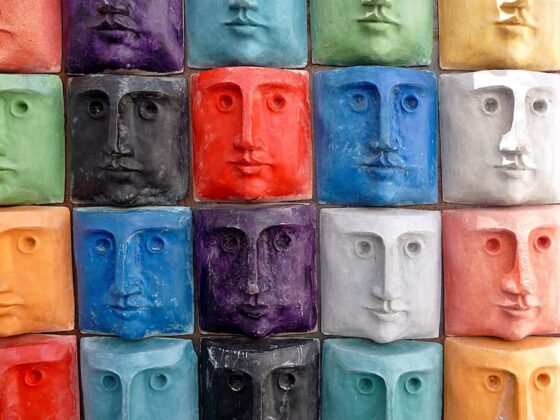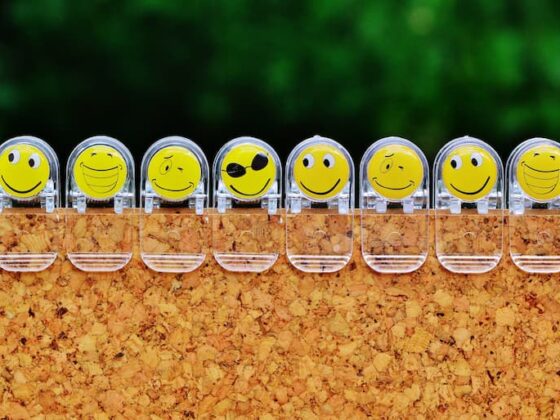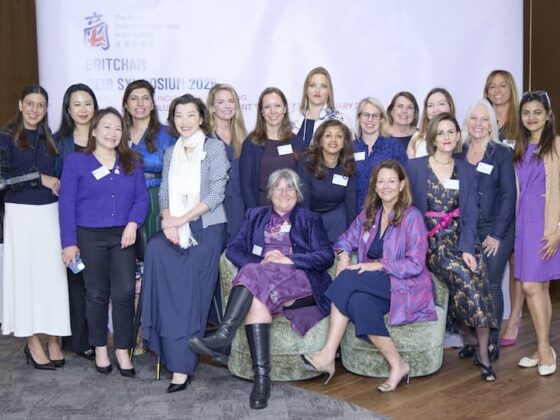Sai Pradhan: Exploring Identity, Empowerment, and Artistic Expression
Sai Pradhan’s journey as an artist and advocate illustrates the profound impact of art on identity and empowerment. Through her work, she not only shares her story but also amplifies the voices of women and minorities, fostering a dialogue that is crucial in today’s society. As we continue to support artists like Sai, we pave the way for a more inclusive and equitable world.
In a world where art serves as a powerful medium for expression and change, Sai Pradhan emerges as a significant voice. An artist of ethnic minority descent, Sai’s work delves deep into themes of identity, empowerment, and the experiences of women in society. In this article, we explore her artistic journey, the challenges she faces, and her vision for the future of women and ethnic minorities through her art.
Today we shed light on the intricacies of Sai Pradhan’s work and her commitment to using art as a tool for empowerment and social change. By sharing her experiences and insights, she inspires a new generation of artists to embrace their identities and challenge societal norms.
Q1: Can you tell us about your background and how it has influenced your art?
I have lived, worked, or studied in Washington DC, London, Edinburgh, Mumbai, Pune, a New Jersey suburb, Louisville, Shanghai, Hong Kong, and New York. I am Indian American and I have lived in Hong Kong for more than 14 years.
My art is influenced by everything I am, and everything I am is quite an eclectic mix because of my life lived in many places, but also because of the way I grew up and what I was curious about.
I speak a few languages, and grew up reading widely. Books were the gift of choice in my family, and visits to bookstores were treasured activities. I was a kid who tried to learn Japanese through a book with my sister one summer when we were bored. I worked at a library as my first job at age 16 in Louisville, Kentucky; I would quickly finish shelving books and then spend my time poring over everything in the art and art history aisle. I held a ridiculous number of diverse internships while taking a full college coursework load. Crafting and painting with my mother and sister was always a natural hobby. My friends and I went to every museum we could in our university years.
My art takes the form of painting and mixed-media work, as well as writing. Every piece of this influences my art.
Q2: What themes do you explore in your artwork?
Whatever feels important to me, which includes remarking on social and economic treatment of women’s labour, the space afforded to brown faces and voices, contemporary anxieties over climate, AI, politics, and other things, big human commonalities like love and grief, explorations of how selves and stories are constructed and narrated, and a good heaping of philosophy threaded through it all.
Q3: How do you think being a woman and an ethnic minority influences your artistic voice?
Being a woman and a minority influences everything I do, including the art I make and the voice and lens it is suffused with. It’s not because I necessarily set out to do that. I think it’s because of the way our social constructs place women and minorities in certain roles, and how that placement influences our experiences. You see or experience the world from where it shoves you, and you make things off of what you see or experience, even as you try to get to where you want to be yourself.
Q4: Can you describe your creative process? How do you translate your experiences into art?
My process isn’t very neat or structured, which is important to me. As somebody who has felt held to standards of perfection, who is historically conditioned to do everything hyper-efficiently and “well,” I now try to push against rigidity when it comes to my own work. My “process” can start with an idea, or it can start with a colour or an aesthetic I feel like playing with. The initiating idea needs time to percolate and to connect to other thoughts, to be available to be molded into something real. I used to feel frustrated at not producing something immediately – the old conditioning at work – but I have understood with practice, that giving myself that percolation time is essential.
For example, I have been mulling over the idea of women being given biological “expiry dates” over the past months, after I had my first mammogram at age 40. Something about seeing myself amongst all the other women dressed in pink or beige clinic gowns sitting in a frigid room, waiting for a painful procedure, which we must now do annually, with a lot of us also at an age where we are reminded near-constantly that our child-bearing years are almost up, made me me want to put these complex feelings on canvas. I am working on a painting of a woman and an egg, which to me, is perhaps a distillation of that experience and thought.
Q5: Your work often highlights women’s empowerment. What does empowerment mean to you?
Empowerment to me means a structure designed for equity, and an environment which takes specific steps to solve existing and historic inequity. What it does not mean is vacuous flowery things that simply pander to women as an audience, or serve a public relations purpose.
Q6: Have you faced any challenges as a woman artist from an ethnic minority? How have you overcome them?
All the time. I don’t think I fit into a neat category when it comes to my background or art, and when that happens, welcoming pathways simply tend to not exist. I try to focus on my work, to do what I think is of value, and to trust my own instincts. There is a bit of delusion that is necessary for an artist to cave to, and you have to believe what you’re making or writing matters and stand for it. In a commercial sense, the art “world” tends to price male artists higher, like all other industries. It also echoes a prevalent social notion of men being perceived as “brilliant” while women have to showcase more effort, training, “deserving” qualities, and trudge through years of obstacles before getting any air. The only way to keep making what you want to make or write is by being unafraid to point out the obstacles when you can, and by doing the work.
Q7: How do you see the role of art in social change?
I think we are at a juncture where the very notion of “art” is in question. Art is a crucial human pursuit to express, to examine something, and to communicate. It is often how we make sense of our fragile lives, and hold up our surroundings to understand, to admire, to critique, and to change. It can also underline the context in which we, as different people, live. It is a widening, not a narrowing of consciousness. While a reader might perceive that to be new age crystals and tree-hugging language, the “widening” is what is likely necessary for positive social change that embraces diversity, helping the vulnerable, and caring about the environment (amongst other things).
Art occupies a strange space in modern society: one that is vaunted and valued at the upper echelons (because of a general adoration of commercial success which is aided by an air of sophistication that art – or literature – can lend), or when one is very, very young, but simultaneously, it also receives no support or value unless there is fame and money immediately involved. We all play a part in reshaping the role we give it.
Q8: Can you share a specific project that holds special significance for you?
Let me share one project from my writing, and another from my visual art work:
This past year, I wrote a book. It is in the “querying” phase at the moment as I try to find the right literary agent for it, so wish me luck! It holds a special significance to me because it was a huge and difficult project, and one that I suspect is going to trudge along a bumpy road because it is terrifyingly difficult to be a debut author at the age of 41, living in Hong Kong, when the agenting and publishing world still lives and breathes out of London and New York, but also because of the way the commerce around book publishing now works. To do something that takes up so much time and energy, without knowing where it ends up, without knowing if it will ever be in a bookstore or in anybody’s hands, is an effort in bravery, so I want to give myself credit for that.
Another project I am working on right now is an artwork based on a self-portrait I made when I was seven years old. My mother saved it, and we found it just a month ago. I make self-portraits and find the making and meaning of them fascinating as it is, but this find has led to me starting to make a large piece, which is a version of my seven-year-old self’s “self-portrait” but through my 41-year-old hands and lens. It has been wild to see the similarities of style I share with my childhood self, and reflect on identity and our ideas of “self” as we grow up. I hope I am able to exhibit it somewhere when it’s done.
Q9: What role do you think education plays in empowering women and ethnic minorities?
Education is the way to learning and knowledge, and that can empower everybody. Ideally, from a survival point of view, people in vulnerable social positions need to know how the world works, to be able to figure out their paths and not fall prey to all the obstacles, and to help others do the same. However, it’s a lot more than that. Learning and developing interests also simply offers value to life. Education isn’t just passing tests, earning money, and obtaining degrees to get jobs, so I urge us all to look beyond that. Otherwise we would be doing ourselves a disservice, and seeing ourselves as widgets for commerce.
Q10: Looking ahead, what are your aspirations for your art and activism?
To me, activism takes on different forms for different people. It can mean concretely standing for something. If my artwork on depicting women at rest serves as resistance to the historic artistic male gaze or to socio-economic expectations of productivity and definitions of labour, it is an aspiration to remark on that topic made real. If my writing on climate through the guise of fiction is a critique of the exploitation of our environment by the ultra-rich, it is an aspiration made real. My future aspirations will take similar form.
For information purposes only. Its contents do not constitute legal advice and readers should not regard this as a substitute for detailed advice in individual instances.




